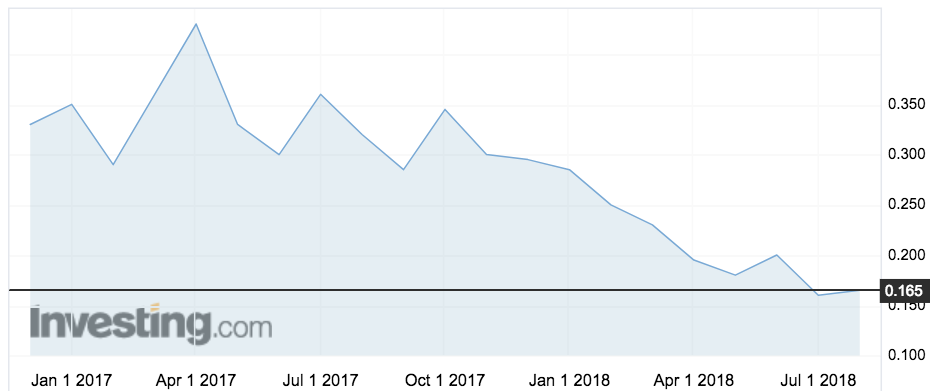Sensera is heading for a third capital raising but expects revenue to rise 70pc
Tech
Tech
Sensera may be trading below its IPO price but chief Ralph Schmitt says once they get a third (and he hopes, final) capital raise done things should look up.
The company deals in MEMS chips and listed in December 2016 with a $10 million IPO.
It closed Wednesday at 16.5c, lower than the 20c offer price.
Micro Electro Mechanical Systems (or MEMS) are miniaturised electro-mechanical devices often used in sensors to measure things like temperature, pressure, chemicals, radiation or location.
Mr Schmitt, a Silicon Valley exec with a string of successful corporate exits behind him, puts the share price weakness down to two things.
“People have realised that we are going to need to do another round of financing,” he told Stockhead.
“People are not happy with the fact that there hasn’t been correlation between the share price and the performance of the company operationally.”
And some of the institutions brought in during a $7 million raise in November 2017 promptly sold out, saying there weren’t enough free shares available for them to easily increase their position.

Sensera raised $4.6 million in August to buy hyper-accurate location sensor company Nanotron. Nanotron’s tracking technology is used in animal ear tags for livestock health and in the mining sector.
The November raise was to bring institutional heft to the register.
Mr Schmitt believes the company wasn’t mature enough at the time for that move, but also that it should have raised double the amount to avoid tapping investors again this year.
“The support was there,” he said.
One more raise — he won’t outline when or how much — should get the company to break-even.
“We’ve been very capital-careful as a company so I don’t think that’s as big an issue as people worrying about dilution.”
“For us the big milestone this year is to get cash flow positive.”
Mr Schmitt says they expect that at the end of fiscal 2019.
Mining, medical, and cows
Sensera says it made full-year revenue of $6.35 million.
But in 2019 it’s predicting that to grow by 70 per cent to $10.5 million to $11.5 million.
This is on the back of growth in medical devices and a partnership with Abiomed, and its agritech cow-monitoring tag business with Smartbow — which has since been taken over by Zoetis, the world’s largest producer of medicine and vaccinations for pets and livestock.
These two customers account for about 20-30 per cent of revenue among a client base of about 30 companies.
Both are just starting. Abiomed only started producing one of two products it’s using Sensera tech for in the June quarter and Smartbow/Zoetis only began selling in January.
But Mr Schmitt has his eye on mining.
“This is really as far as I’m concerned our biggest growth opportunity.”
Mining was only a few million dollars last year to Sensera but it’s expected to grow faster than the 70 per cent group revenue growth forecast for 2019.
They have sold tracking technology into 70 mines, mostly in Africa but also in Europe, Russia and China, and are adding about one a month.
However, these are one-off payments for products, usually sold through middle-men.
Sensera is working on a project to add a software backend to turn that into a recurring software-as-a-service (SaaS) product.
A contract with Clearblade in April to build the required software is providing the broad interface, although Mr Schmitt admits they will need to make industry-specific software for agriculture, mining and medical applications.
He also says they will look to bring this in-house in future, in order to reduce the risk of not owning critical software.
A SaaS product for the mining sector is expected to be ready by the end of the year.